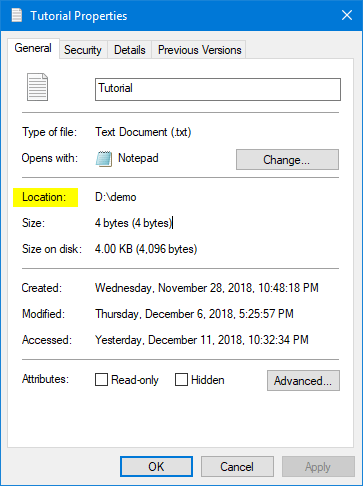


It means that you can run find command without any options and arguments. When we want to know the directory path, we can use the dirname command in our bash script to retrieve our directory path. If no paths are given, the current directory is. Let’s implement and learn this method in the following steps.Ĭreate the file with the. The general syntax for the find command is: find directory to search options expression Everything in brackets are optional. That argument and any following arguments are taken to be the expression describing what is to be searched for. If the file in a directory is found the result is stored in the variable and the search will not be repeated unless the variable is cleared.
A cache entry, or a normal variable if NOCACHE is specified, named by is created to store the result of this command.Create a bash script file and type the script into the file, make the file executable, and run that file to get the output. This command is used to find a directory containing the named file. The file name can easily be obtained using the Bash script.
BASH FIND FILE PATH HOW TO
Method 1: How to Get File Name From the Path Using Bash script? Bonus Tip: How to Get and Remove Extensions From the File Name?.Method 2: How to Get File Name From the Path Using Basename Command?.Method 1: How to Get File Name From the Path Using Bash script?.In this post, you will learn to get file names from the path using the bash script. Using this user can also get file names from the path. In Linux and OS-X, it starts with /, which is called root.
BASH FIND FILE PATH FULL
In our case, we will check in the test and numeric directories. In Windows, a full file directory path starts with a drive letter (C:, D. Users can write anything in the bash script, such as programs and commands, and run it to get the file’s output. To find the files in different directories, add their paths in the command. If this is set, regardless of the write and executable privileges that are set on the files in the directory, only the file owner, the directory owner, or the root user can rename or delete files in the directory.In Linux, bash script is a shell in which commands are written in sequence. This will break his deployment script if any of the files returned. The execution permission for the others can sometimes be represented by a t. Using f will strip off all directories, not just. When used with a directory, any files created inside it will take their group permissions from the directory they're being created in, not from the user who is creating the file. Here, PWD is a variable containing the current working directory. If you want the full path, use: find 'PWD' If you want the relative path, use: find. By default it will recursively list every file and folder descending from your current directory, with the full (relative) path. Let’s create a simple shell script for the same: cat getfullpath. 7 Answers Sorted by: 58 Use the find command. To get a list of all the files and folders in a particular directory in the. When this is applied to a file, it means the file will be executed with the privileges of the ower's group. We can use the combination of these two commands to find the full path of a file. These functions are spread out over several modules such as os, os.path. The execution permission for the group can also be an s. How can I find the path for a given file Ask Question Asked 11 years, 8 months ago Modified 9 years, 3 months ago Viewed 64k times 3 How can I find the directory for a file In my Unix shell, I know how to use the ls command, but it shows just the name of the file. If it is present, it means that the file is executed with the privileges of the file owner, not the user executing the file. Sometimes the execution permission for the owner is represented by an s. The second set of three permissions are for group members, and the last set of three permissions is for others. The first set of three characters are the permissions for the file owner.


 0 kommentar(er)
0 kommentar(er)
